Akkaravadisal | Srivilliputhur Ranganathar Neivedyam
Offering to the Divine
Akkaravadisal/Akkara Adisil is a divine sweet made in the temples of Srivilliputhur and Sri Rangam. Akkaravadisal is a sweet porridge (payasam/kheer) made of rice, jaggery and milk.
Introduction
About this Recipe
Akkaravadisal is a sweet porridge (payasam/kheer) made of rice, jaggery and milk. It is very similar to sweet pongal or sakarai pongal, except that here the rice is cooked in milk and more ghee is added.
“Akkaravadisal/Akkara adisal” is a very special dish prepared for Lord Ranganatha. This dish has been mentioned in Naalayira Divya Prabandham in a couple of instances. Andal herself has composed the poems which mention this.
His Divine Holiness (HDH) Bhagavan Nithyananda Paramashivam HIMSELF mentions in many of his satsangs about Akkaravadisal and how it is a special naivedyam for Lord Ranganathar.
Legend behind Akkaravadisal
Andal is a jeevatma (lived in human body) of goddess Lakshmi herself (also known as Thayar, consort of Maha Vishnu/Balaji/Lord Venkateshwara/Narayana), and lived on planet earth between 7th or 8th century. She is also the only female Alwar among the 12 Alwar saint of the Vaisnava sampradaya. One of poems she composed depicting her love and devotion for Perumal (Lord Venkateshwara) is called the Tirupavai and is a collection of 30 pasurams (verses). In the 27th pasuram, she describes how she concludes a fast she and her friends have kept for Perumal by decorating themselves with ornaments, eating the sweet rice prepared with thick milk and overflowing ghee and singing the praise of Perumal.
Thus Devi Andal herself made this as a naivedyam. In the temples it is cooked in a bronze vessel and that adds a special flavor to the dish, so you can try that as well.
For Hindus, Panguni Uthiram is a very important day. It falls on the day the moon transits in the asterism or nakshatram of Uttara-phalguni or Uthiram during the month of Phalguni/Chaitra. In Srirangam, during this day, Lord Ranganatha and Thayar came together. This is considered a very sacred occasion and it is believed that a visit to the Srirangam temple on this day will relieve one of all sins. During this day Akkaravaddisal is served as prasada.
The detailed recipe is being laid out here to enable all devotees to make this recipe at home and consume and enjoy the taste.
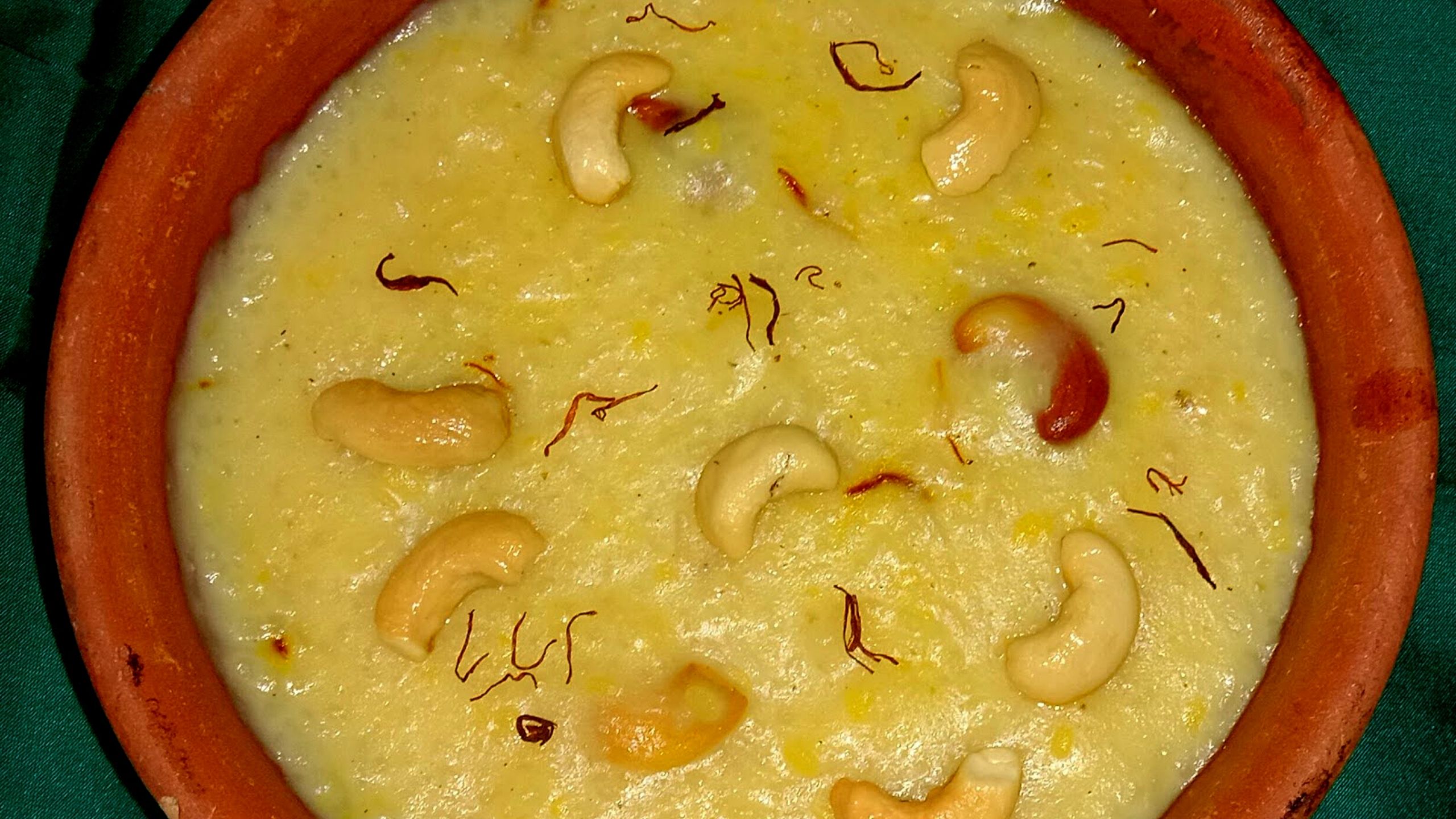
“ALWAYS EAT ONLY CONSECRATED FOOD; PRASADA.
EAT ONLY ONCE A DAY. MAKE IT AS A LIFESTYLE.
EAT KANCHIPURAM IDLI. I CAN GIVE 25 SACRED FOOD OFFERINGS –
KANCHIPURAM IDLY, MELAKOTTAI PULIYOTHARAI,
SRIVILLIPUTTUR AKKARAVADISAL, TIRUPATI LADOO,
JAGANNATH MAHAPRASADA. HAVE THE RECIPES FOR ALL THIS.
OFFER ANY ONE OF THIS EVERYDAY TO THE DEITY AND EAT ONLY ONCE A DAY.
*THESE ARE ALL AMAZING TRADITIONAL FOOD RECIPES!
*SHASTRA PRAMANA FROM MANUSMRITI ON EATING CONSECRATED FOOD, PRASADA:.
MANU SMRITI, CHAPTER 2, SLOKA 55:
पूजितं ह्यशनं नित्यं बलमूर्जं च यच्छति।
अपूजितं तु तद्भुक्तम् उभयं नाशयेदिदम्।।
TRANSLATION:
EATING THE FOOD THAT IS IN WORSHIP AND CONSECRATED – PRASADAM –
ALWAYS GIVES ENERGY AND STRENGTH. EATING NON-CONSECRATED FOOD DESTROYS BOTH ENERGY AND STRENGTH.”
– SPH JGM Nithyananda Paramasivam
Ingredients
-
Raw rice – 150 gms (0.5 US cup + 4.5 tablespoons or 3/4 cup approx )
-
Yellow moong dal – 25 gms (⅛ cup)
-
Boiled Milk – 750 ml (3 and ⅙ cup)
-
Water – 500 ml (2 and 1/10 of cup)
-
Jaggery – 450 gms (2 and ¼ cup)
-
Cardamom – 1 teaspoon
-
Ghee – 200 ml (⅚ cup)
-
Cashew nuts – 25 gm (⅛ cup)
-
Saffron threads – Few
Preparation time: 15 minutes (soaking time 15mins approximately)
Cooking time: 45 minutes
Total time: 60 minutes
Servings : 6-8 servings
Course: Dessert / Naivedyam
Cuisine : Tamil Nadu cuisine
Cooking Method
- Wash the rice and dal and keep it aside.
- Boil the milk and keep it aside.
- Now add the rice and dal in 500 ml of milk and boil it on a low flame.
- After adding the rice and dal, close the lid and bring the milk to boil again on the same low flame.
- After the milk comes to a boil, open the lid and cook the rice and dal in an open pot by stirring frequently.
- While cooking the rice and dal, stir in one tablespoon of ghee.
- In the meantime, by the side add some water to the jaggery and heat on a medium flame till the jaggery dissolves and thickens a little.
- Once the jaggery dissolves and thickens, turn off the flame.
- Strain this mixture thru a strainer to remove any stones and other dirt that may be present in the jaggery syrup.
- Now cool this mixture down till it comes to room temperature. When making any sweet that is a mixture of jaggery syrup and milk, make sure one of them is at room temperature, else the milk will curdle. Here, because the milk is cooking in the pot, we need to cool down the jaggery syrup.
- Once the rice and dal are cooked well in the milk, add the cooled down jaggery syrup and stir well. Let this mixture cook for another minute, the mixture will also thicken as it cooks.
- Now add the remaining one third of boiled milk (250 ml), and stir and cook to your desired consistency of porridge/payasam/kheer (it should not be too thick or too thin in consistency). Also, through all this, make sure to keep stirring, as otherwise Akkaravadisal will settle at the bottom.
- Add two tablespoons of ghee at this time and stir well.
- Meanwhile, take a Kadai and add ghee.
- Once the ghee is hot, add cashew nuts and fry in the ghee till the cashew nuts become golden brown in color.
- Add them to the akkaravadisal.
- Remove from the heat/flame and add the cardamom powder and saffron and mix well.
Now akkaravadisal is ready to be offered as Naivedhyam to Lord Ranganatha!
Step by step instructions
1
Wash the rice and dal and keep it aside.
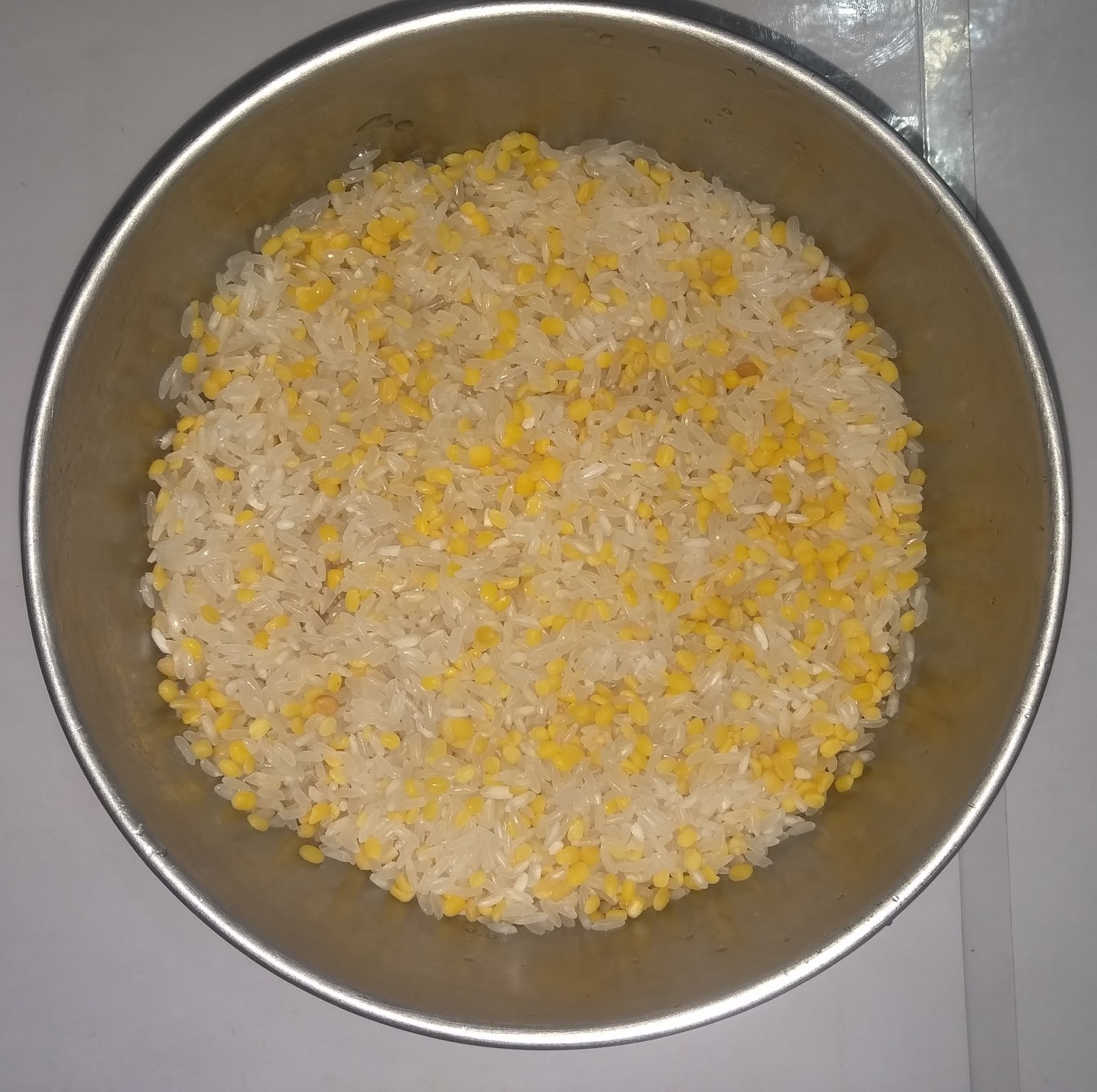
2
Boil the milk and keep it aside
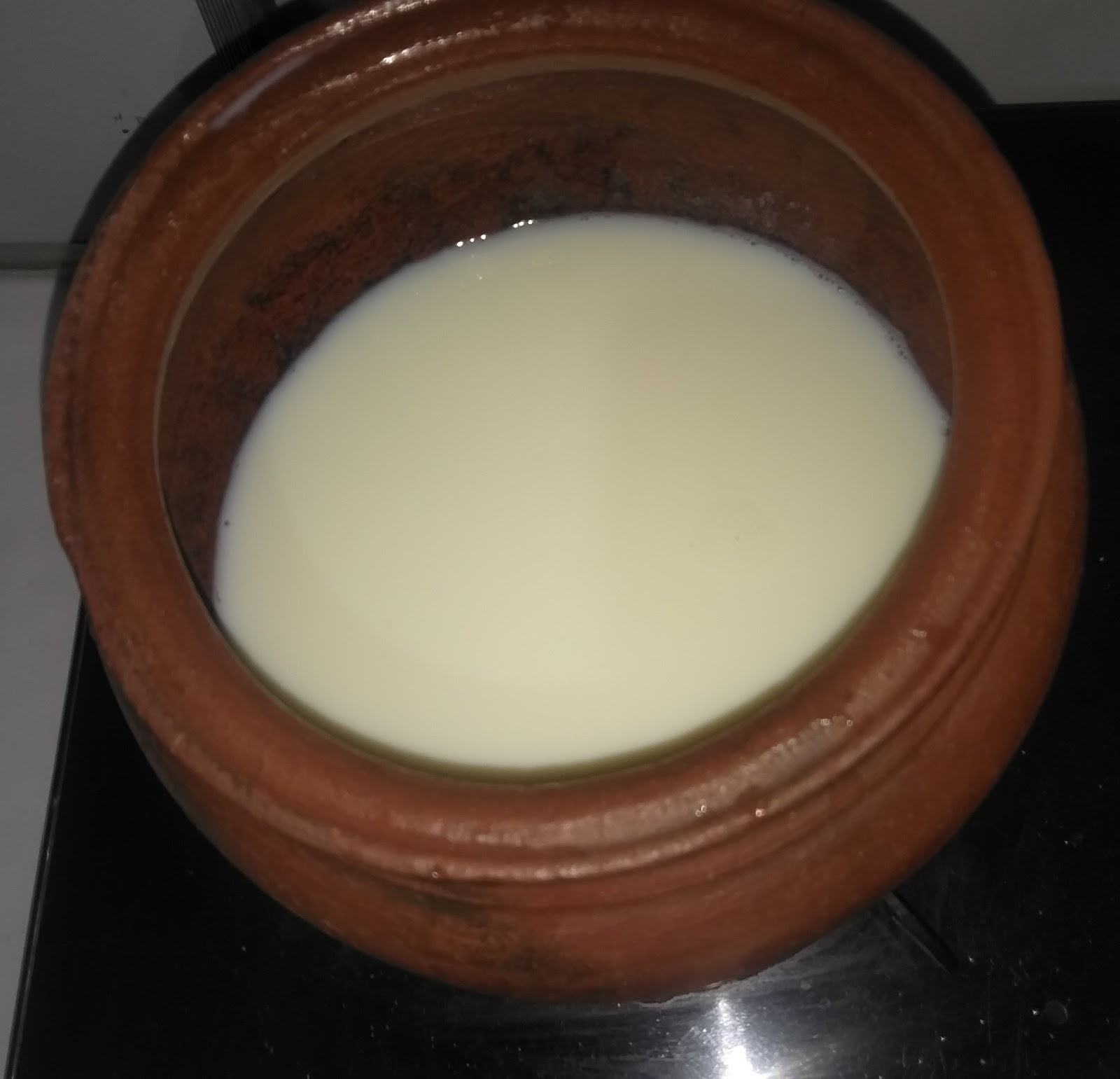
3
Now add the rice and dal in 500ml of milk and cook it on a low flame.

4
After adding the rice and dal, close the lid and bring the milk to boil again on the same low flame.
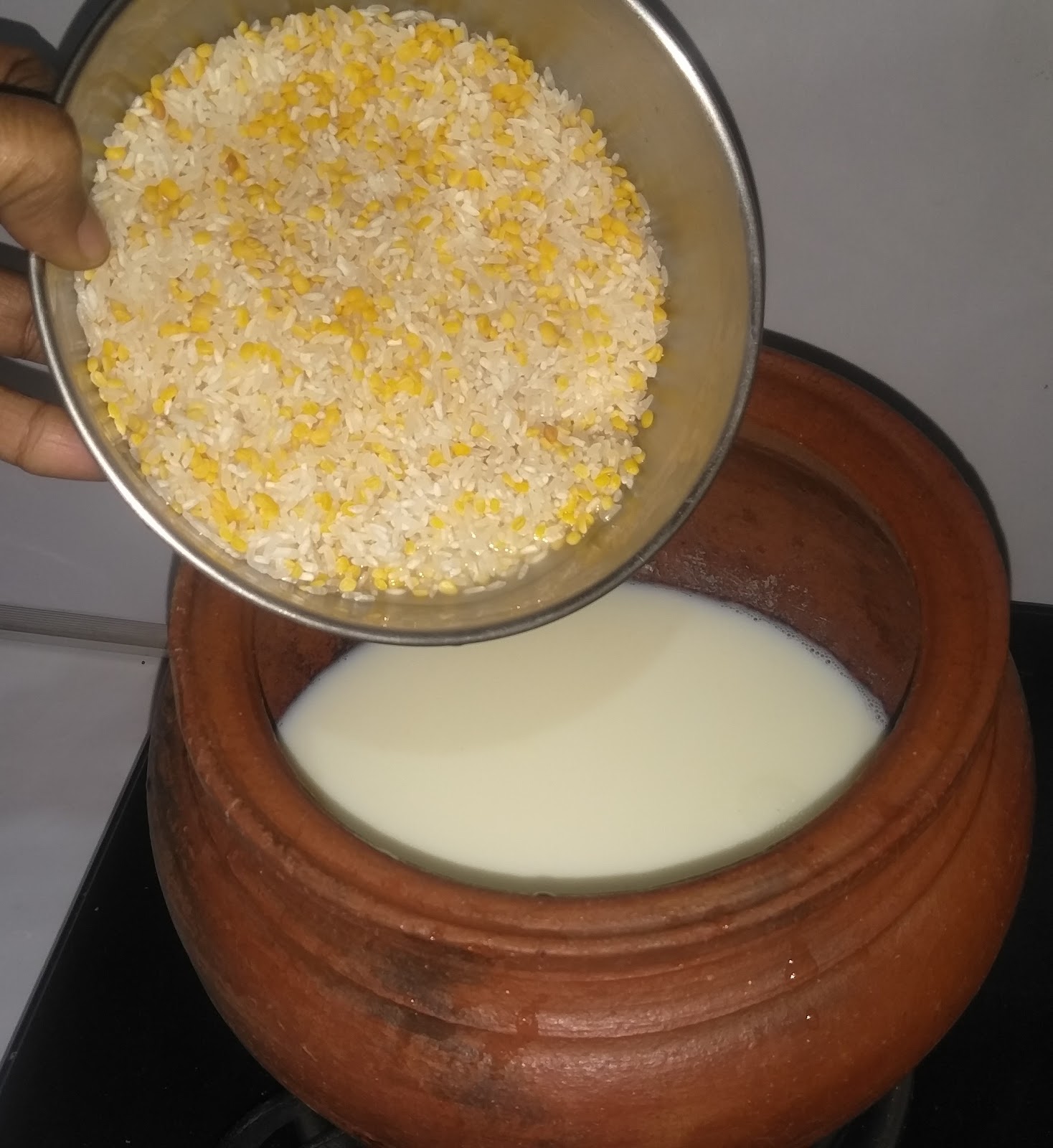
5
After the milk comes to a boil, open the lid and cook the rice and dal in an open pot by stirring frequently.
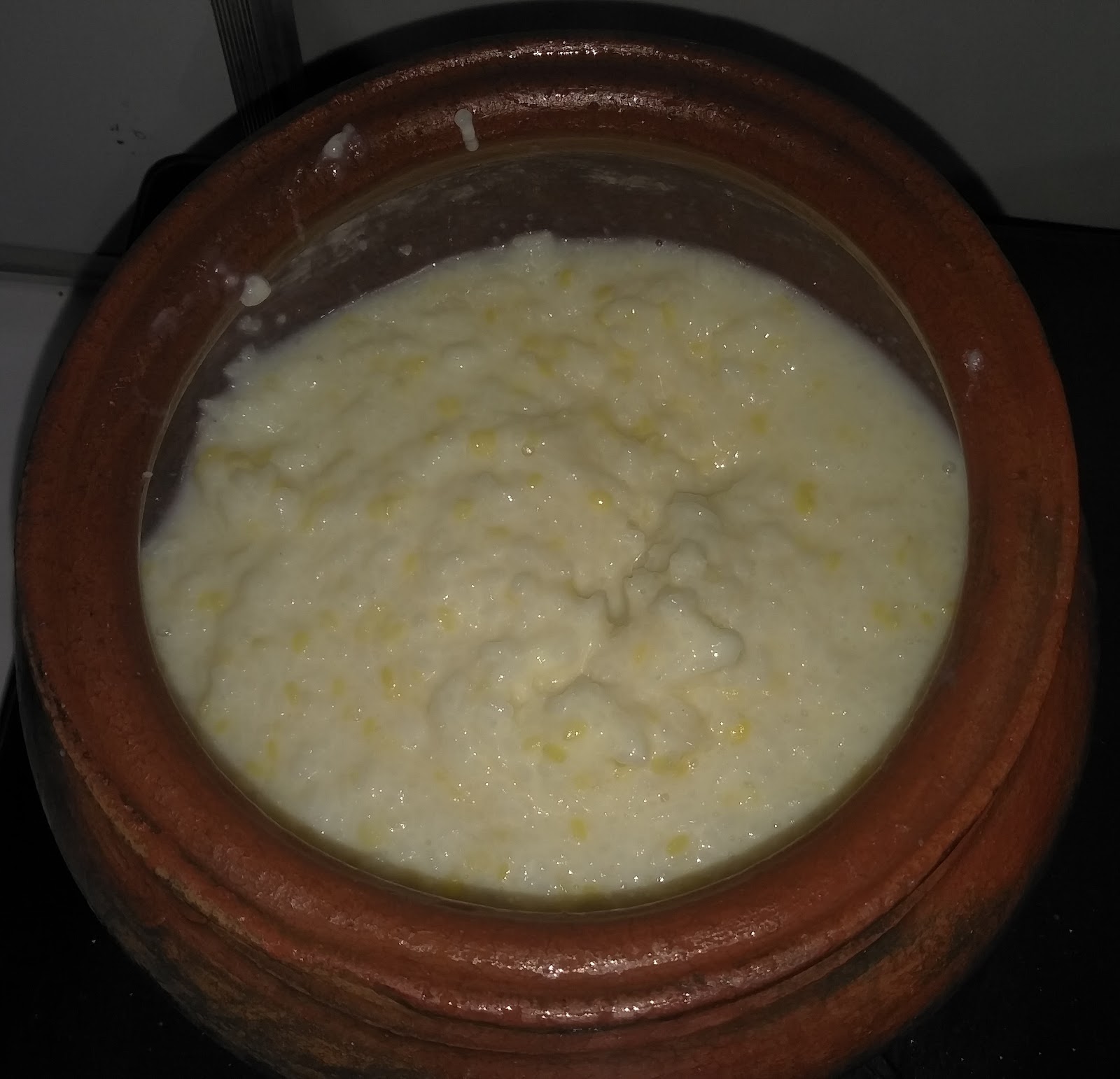
6
While cooking the rice and dal, stir in one tablespoon of ghee.
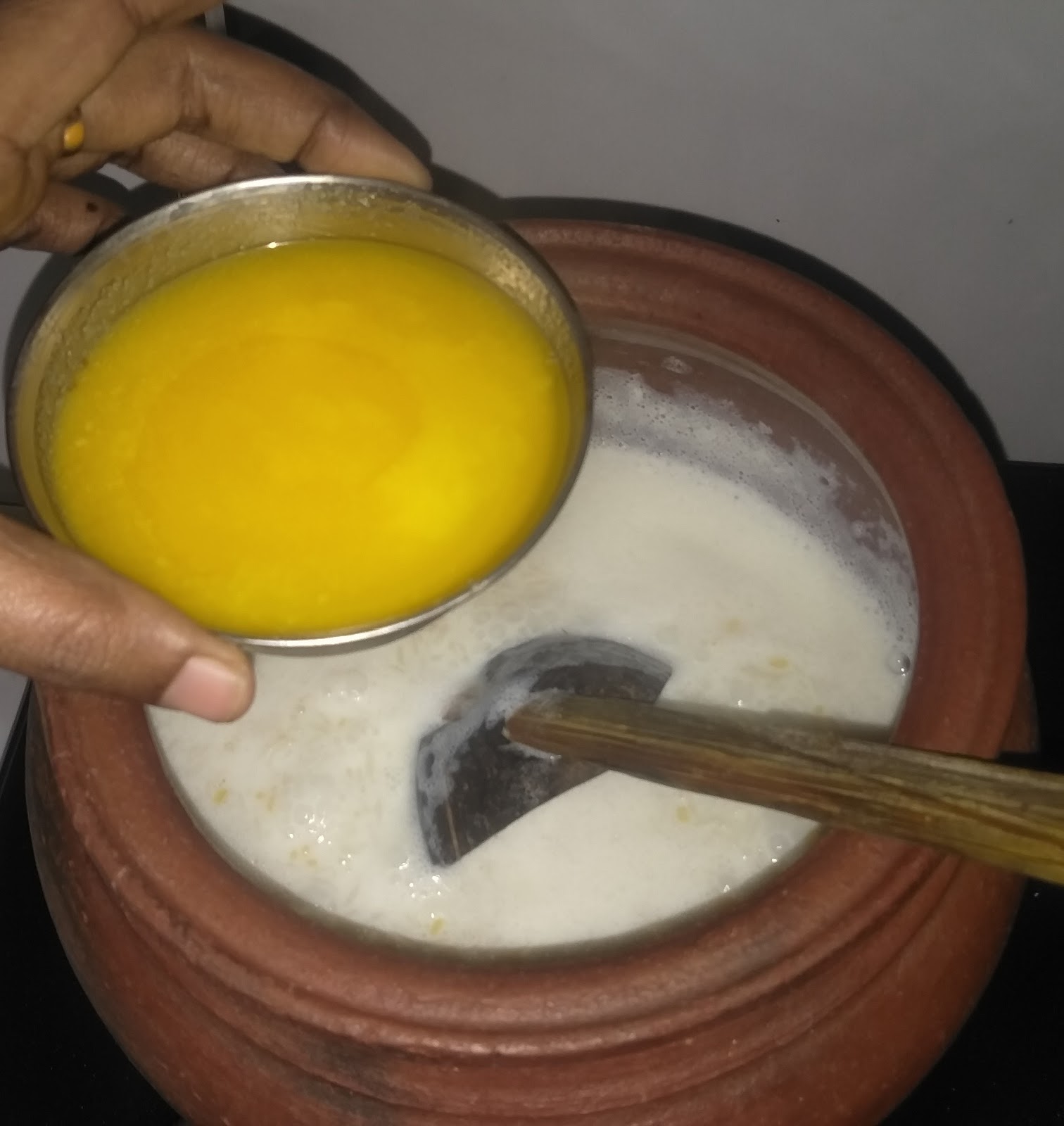
7
In the meantime, by the side add some water to the jaggery and heat on a medium flame till the jaggery dissolves and thickens a little.
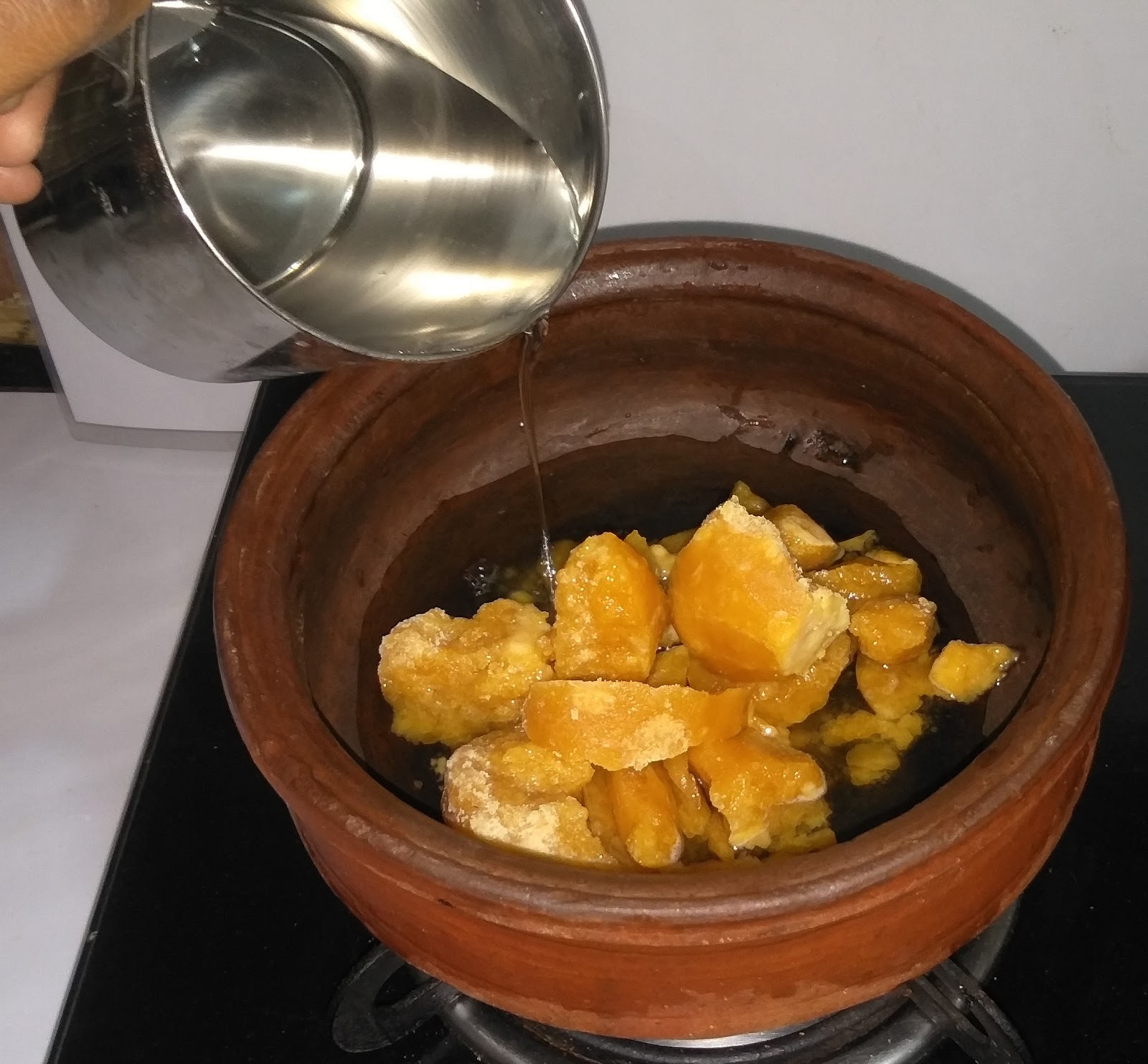
8
Once the jaggery dissolves and thickens, turn off the flame.
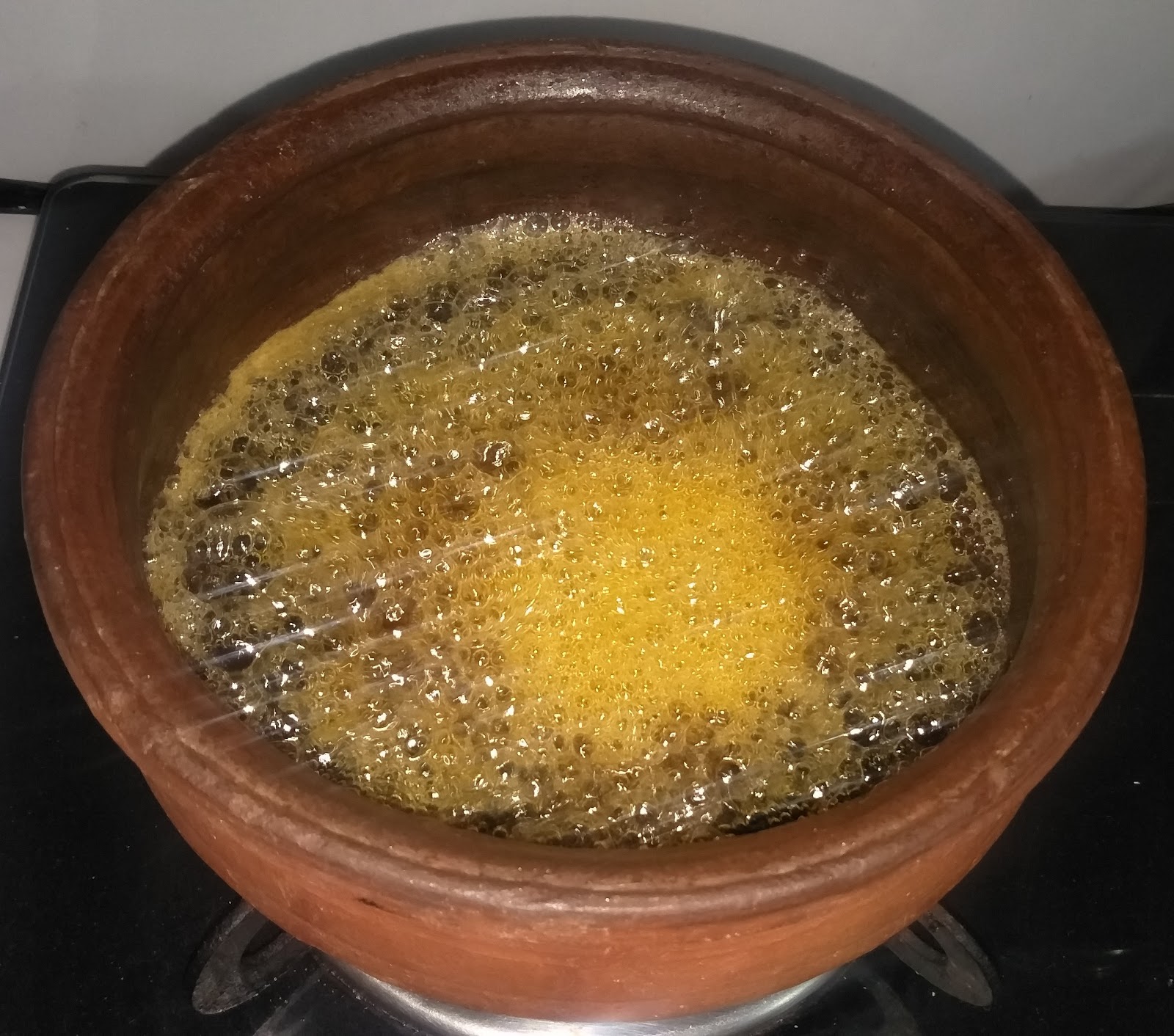
9
Strain this mixture through a strainer to remove any stones and other dirt that may be present in the jaggery syrup. Now cool this mixture down till it comes to room temperature.
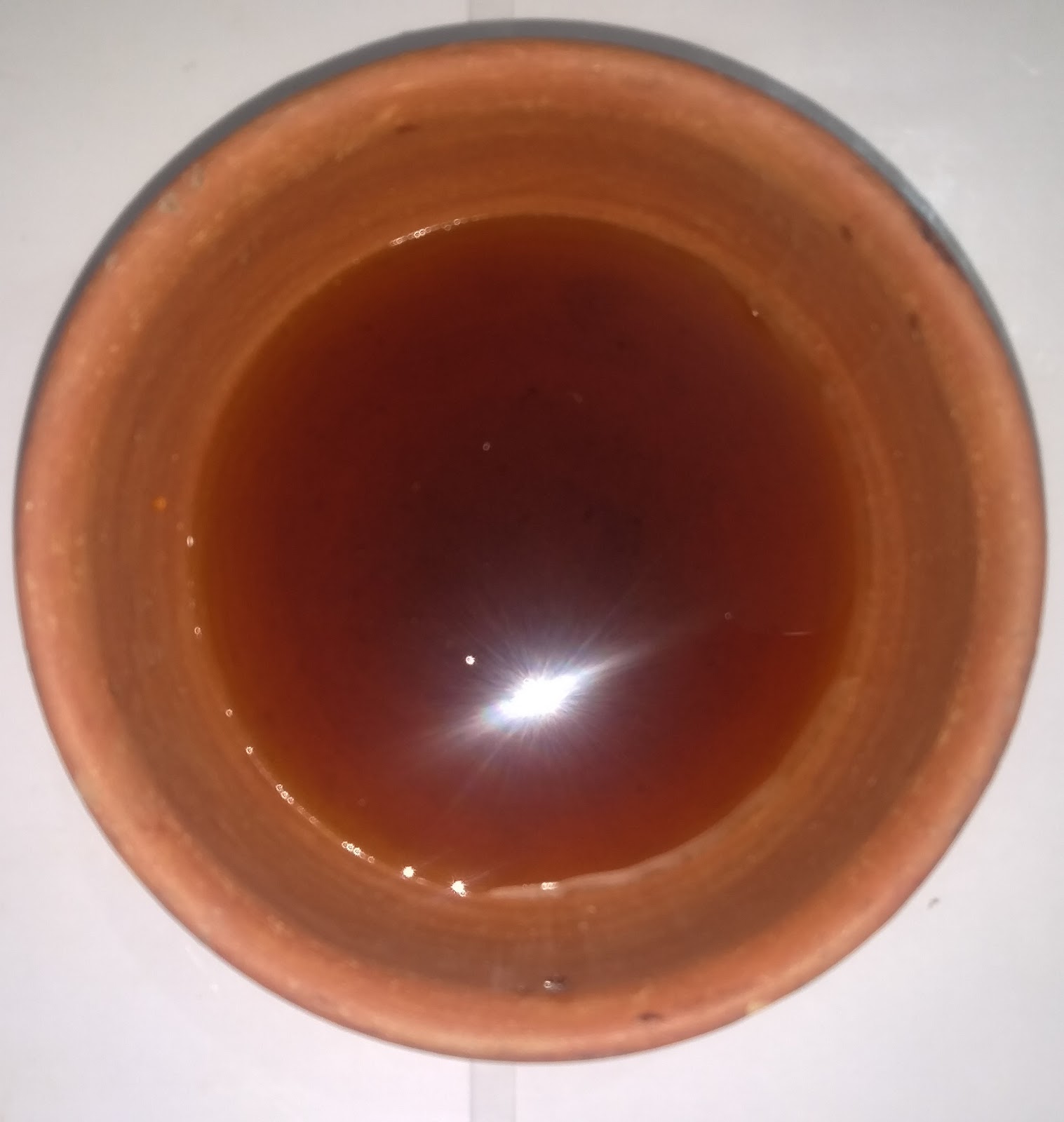
10
Once the rice and dal are cooked well in the milk, add the cooled down jaggery syrup and stir well.

11
Let this mixture cook for another minute, the mixture will also thicken as it cooks. Now add the remaining boiled milk (one third, 250 ml), and stir and cook to your desired consistency .
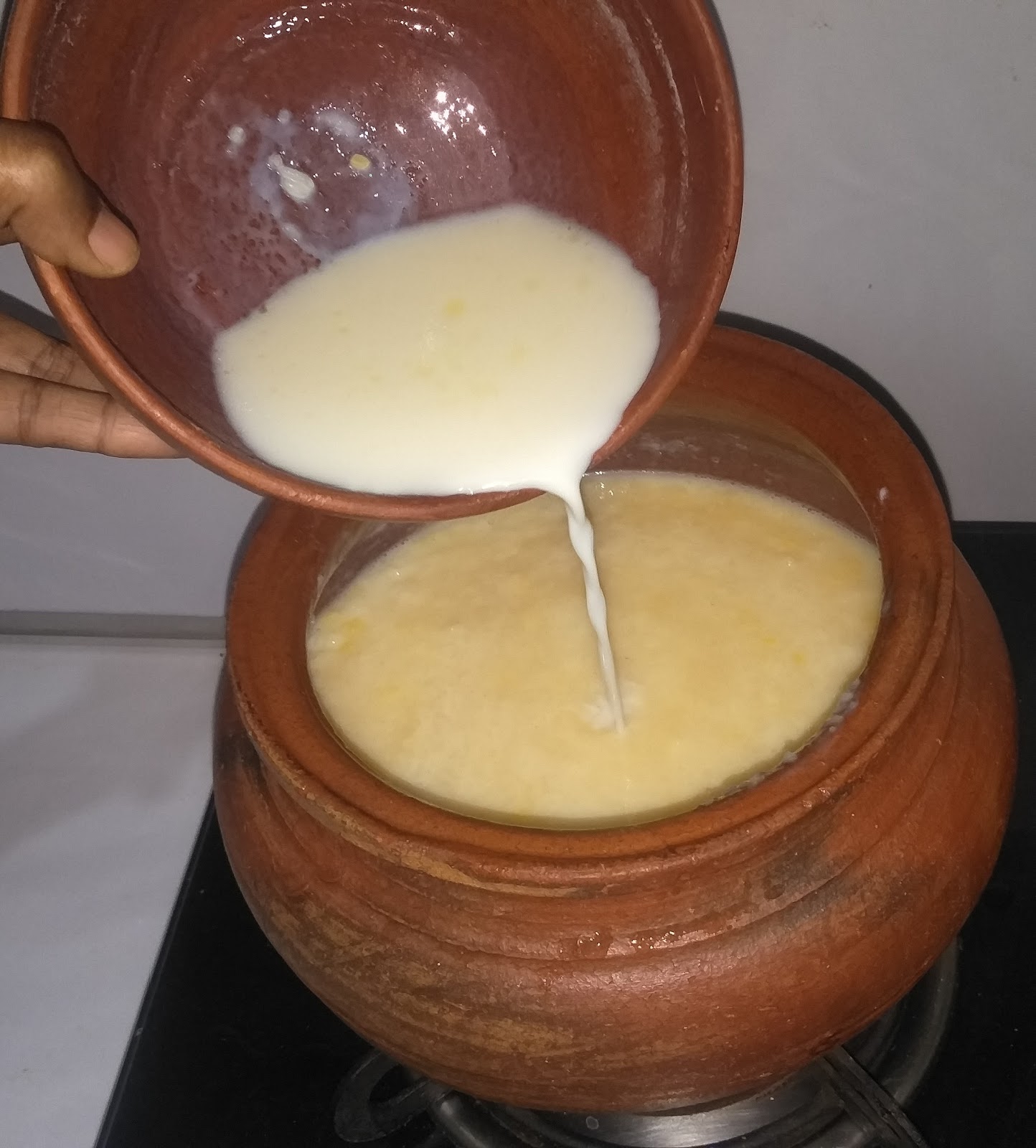
12
Add two tablespoons of ghee at this time and stir well.
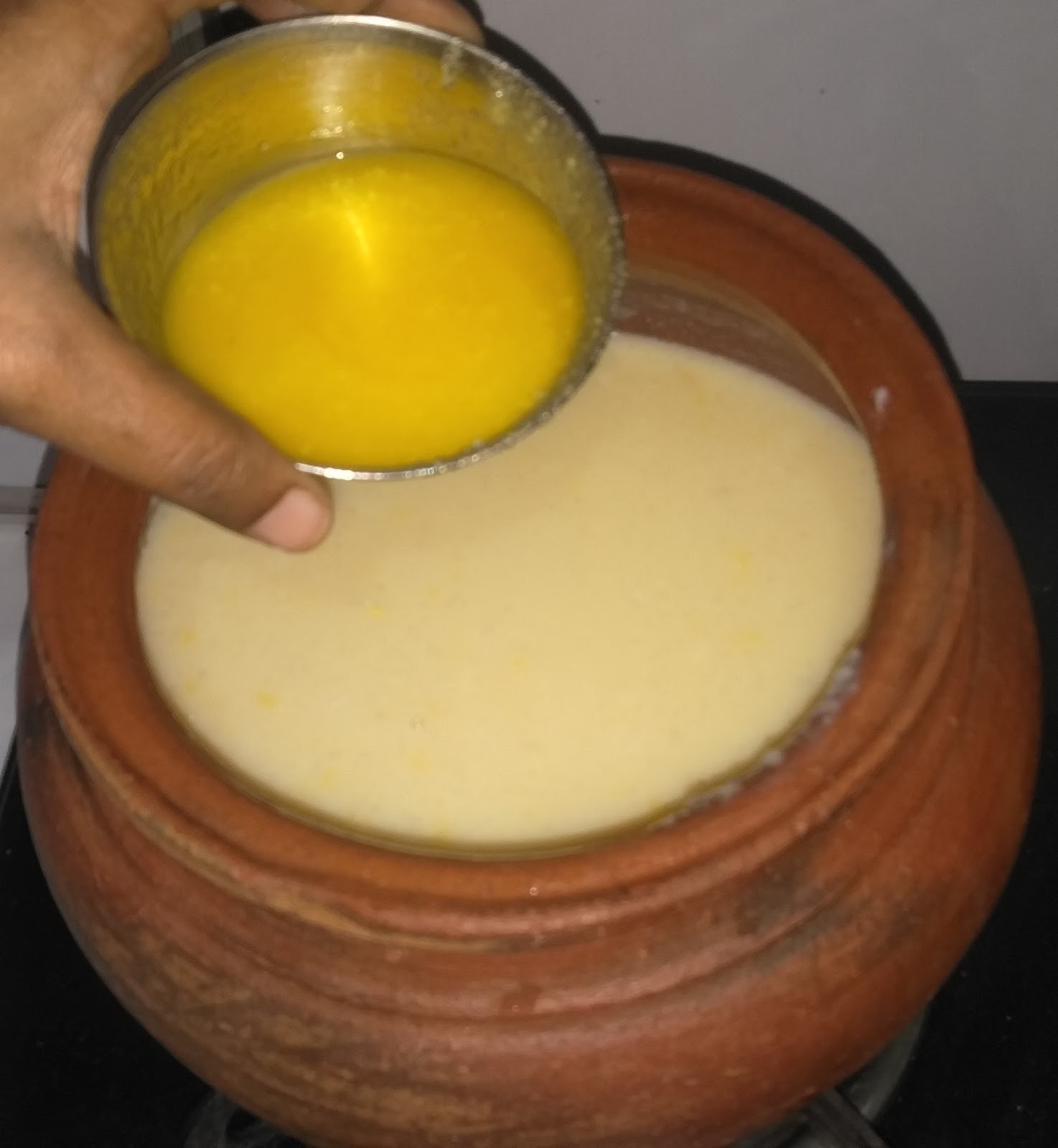
13
Meanwhile, take a Kadai and add ghee .

14
Once the ghee is hot, add cashew nuts and fry in the ghee till the cashew nuts become golden brown in color.
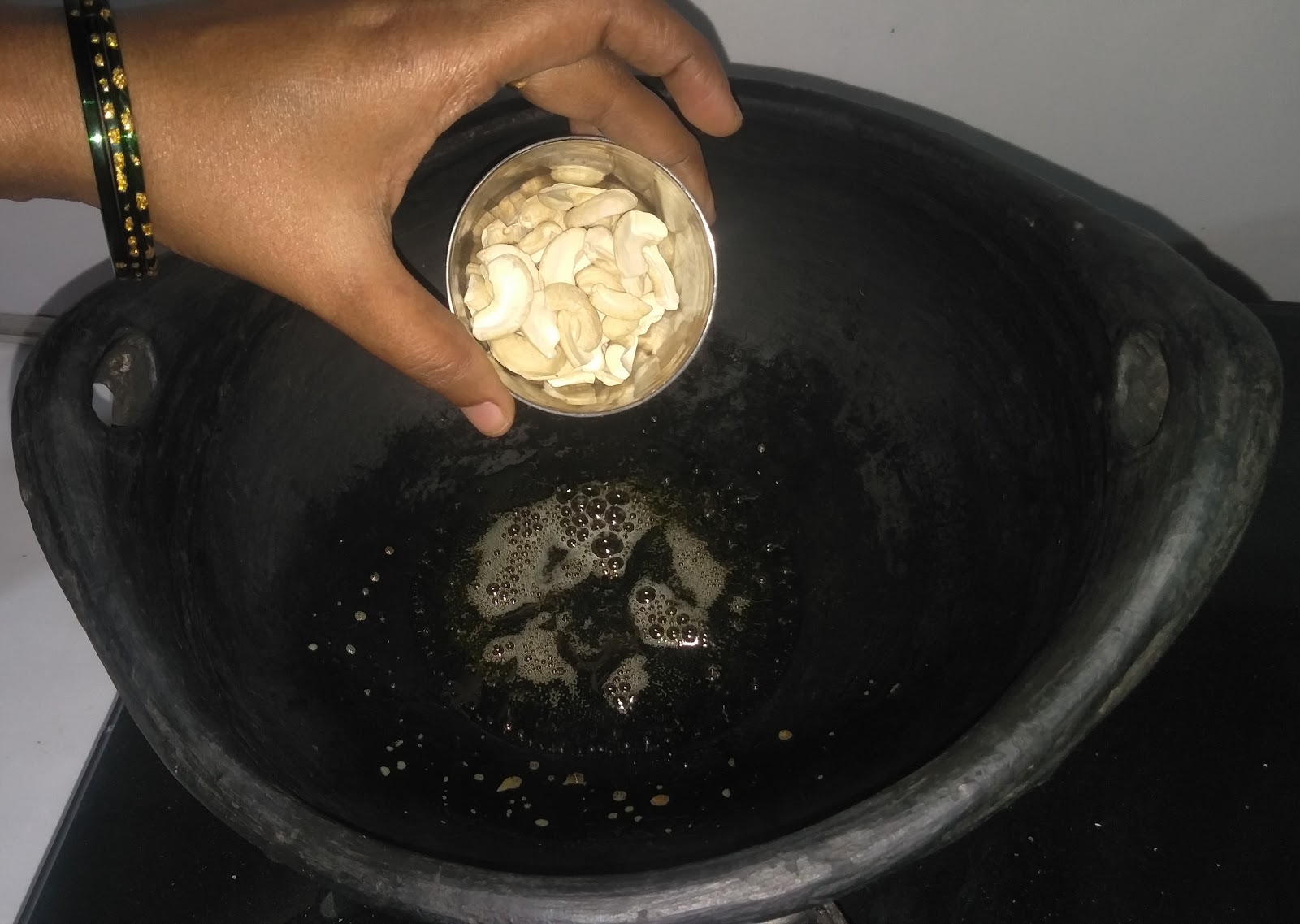
15
Add the cashew nuts with ghee to the akkaravadisal.
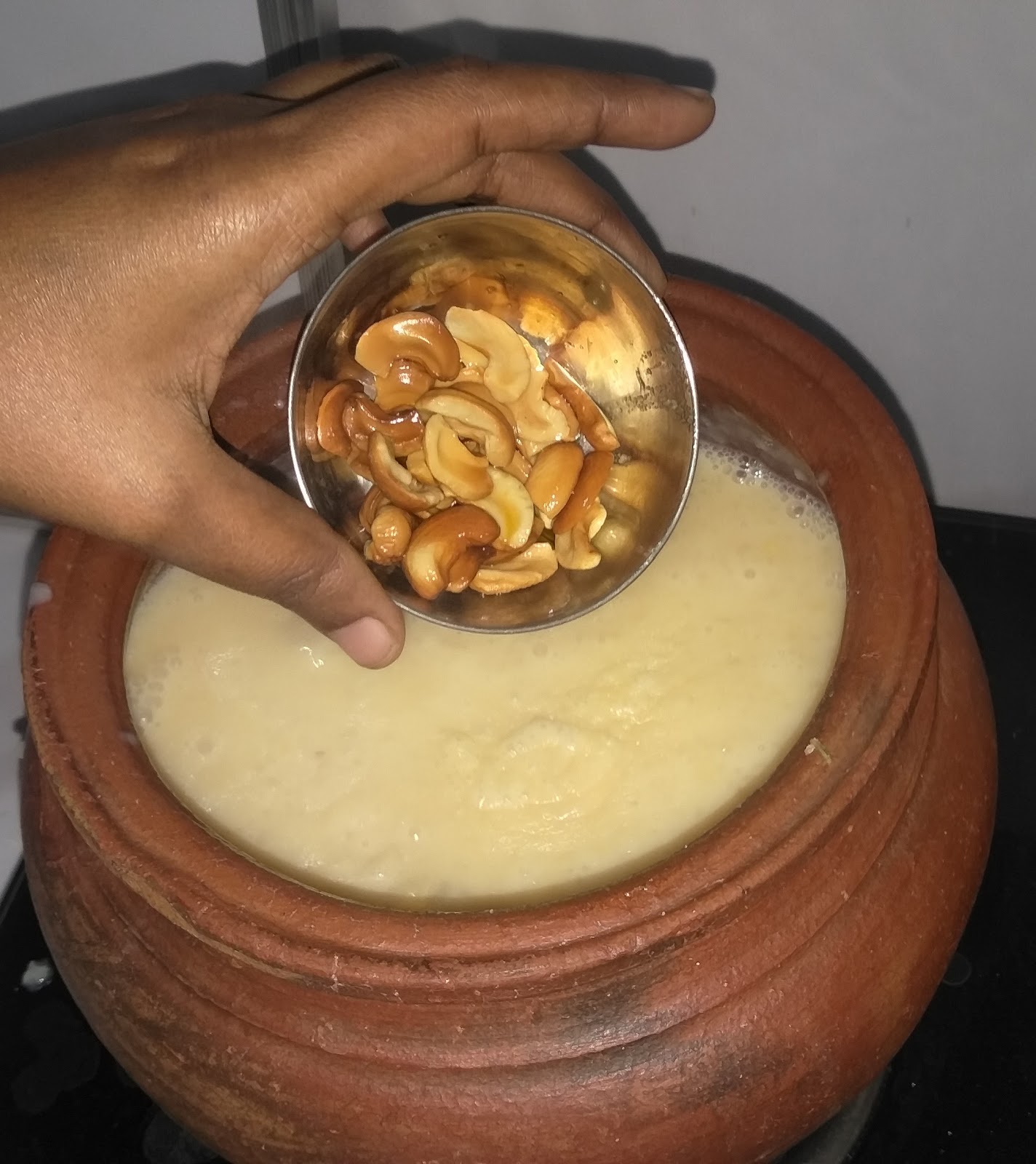
16
Remove from the heat/flame and add the cardamom powder and saffron and mix well.

17
Now akkaravadisal is ready to be offered as Naivedhyam to Lord Ranganathar!


